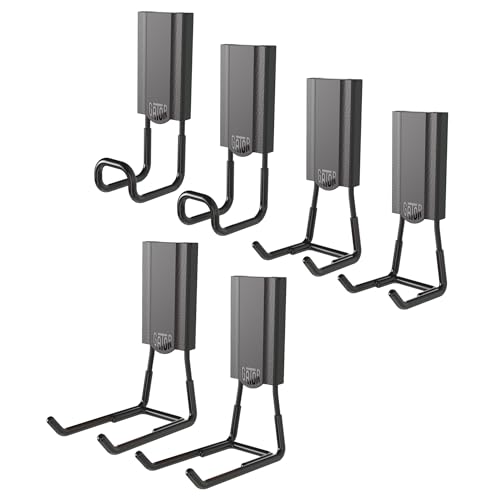








When it comes to measuring and marking straight lines on a floor, a chalk line is an essential tool for any DIY enthusiast or professional builder. A chalk line is a simple yet effective tool that can save you time and ensure accuracy when laying tiles, installing flooring, or framing walls. In this article, we will discuss how to properly use a chalk line on the floor to achieve precise and straight lines.
Step 1: Preparing the Area
Before using a chalk line, it is important to prepare the area by thoroughly cleaning and sweeping the floor. Any dirt or debris can interfere with the line’s accuracy, so make sure the surface is clean and free from any obstructions. Additionally, you may want to use a primer or sealer on the floor, especially if you are working with porous materials such as concrete.
Step 2: Determining the Layout
Next, determine the layout of your project and decide where you want to mark the straight lines. Measure and mark the starting and ending points of each line using a measuring tape or a straight edge. This will help you ensure that the lines are parallel and evenly spaced. If you are working on a large area, it may be helpful to use a pencil to lightly mark the layout before using the chalk line.
Step 3: Loading the Chalk Line
Now it’s time to load the chalk line. Unscrew the cap or open the hatch of the chalk box and fill it with chalk powder. Use a brightly colored chalk that contrasts with the floor’s color to ensure clear visibility. Once the box is filled, close it securely and unwind the string from the reel.
Step 4: Snapping the Line
Hold one end of the chalk line at the starting point of the line you want to mark. Make sure the line is taut and aligned with your layout markings. With your other hand, pull the chalk line away from the starting point and release it, allowing the string to snap back onto the floor. This will leave a thin, straight line of chalk on the surface.
Step 5: Double-checking and Repeating
After snapping the first line, double-check its accuracy and adjust as needed. If the line is not straight or in the desired position, you can lightly brush it away with a broom and snap a new line. Repeat this process for each line you want to mark on the floor, ensuring that each line is parallel and evenly spaced.
By following these steps and utilizing a chalk line correctly, you can achieve precise and straight lines on your floor, making your DIY projects or professional installations much easier and more accurate. Remember to always wear protective gear such as goggles and gloves when working with chalk and other construction materials.
Preparing the Floor
Before you can begin using a chalk line on the floor, it is important to properly prepare the surface. This will ensure that the chalk line will be straight and accurate.
Here are the steps to take when preparing the floor:
Clean the Floor
The first step is to thoroughly clean the floor. Remove any dirt, debris, or dust that may be present. Use a broom or vacuum cleaner to sweep the floor and make sure it is free from any obstructions.
Smooth the Surface
If there are any rough spots or uneven areas on the floor, you will need to smooth them out. Use a sander or sandpaper to even out any bumps or ridges. This will help to create a level surface for the chalk line.
Additionally, if there are any cracks or holes in the floor, you should fill them with a suitable filler. Allow the filler to dry completely before proceeding.
Apply Primer
Applying a primer to the floor is optional, but it can help to improve the adhesion of the chalk line. If you choose to use a primer, follow the manufacturer’s instructions for application.
Once the floor has been cleaned, smoothed, and primed (if desired), you are ready to start using the chalk line. This preparation process will ensure that you achieve accurate results and save time in the long run.
Clear the Area
Before using a chalk line on the floor, it is important to clear the area of any obstacles or debris. This will ensure that the chalk line is straight and accurate.
Start by removing any furniture, tools, or other objects that may be in the way. This will create a clear space to work in and reduce the risk of tripping or damaging the items. Additionally, sweep or vacuum the floor to remove any dust, dirt, or loose particles that could interfere with the chalk line.
If there are any cracks or uneven surfaces on the floor, consider filling or repairing them before using the chalk line. This will help to create a smoother and more even surface for the chalk line to adhere to.
It is also important to ensure that the area is well-lit. Adequate lighting will make it easier to see the chalk line and ensure precise measurements and markings.
By clearing the area before using a chalk line on the floor, you will set yourself up for success and ensure accurate and professional results.
Clean the Surface
Before using a chalk line on the floor, it is important to clean the surface to ensure accuracy and proper adhesion of the chalk. The first step is to remove any loose dirt or debris from the floor. Use a broom or vacuum to sweep away dirt, dust, and small particles.
Next, inspect the floor for any stains, spills, or sticky residues. Use a mild detergent and warm water to clean these areas. Scrub gently with a sponge or brush until the stains are removed. Rinse the area thoroughly with clean water and allow it to completely dry.
In addition to removing stains, you may also need to repair any cracks or holes in the floor. Fill in these imperfections with an appropriate filler or patching compound. Smooth out the surface with a putty knife or trowel and let it dry according to the product’s instructions.
Finally, check the floor for any oily or greasy spots. These can affect the adhesion of the chalk and lead to inaccurate lines. Use a degreaser or solvent to remove any oil or grease stains. Follow the manufacturer’s instructions and make sure to rinse the area thoroughly after cleaning.
Once the surface is clean and dry, you are ready to use the chalk line to mark straight lines on the floor for your project.
Check for Levelness
Before using a chalk line on the floor, it is important to check for levelness to ensure accurate and straight lines. Here are the steps to follow:
-
Start by identifying the high point on the floor. This can be done by using a level or a straightedge. Place the level or straightedge on the floor and check for any gaps or spaces between it and the floor. The high point is where there is a gap or space.
-
Once the high point is identified, mark it with a pencil.
-
Next, measure the distance from the high point to the walls. This will help determine how much the floor needs to be leveled.
-
If the high point is close to the walls, it may be necessary to use a floor leveling compound to ensure a flat surface. Follow the instructions provided with the leveling compound to apply it properly.
-
If the high point is not close to the walls, it may be possible to use shims or other leveling methods to correct the unevenness. Consult a professional if you are unsure about the best method to use.
-
Repeat the leveling process in different areas of the floor if necessary.
-
Once the floor is leveled, it is ready for the chalk line to be used. Simply snap the chalk line on the floor using the high point as a reference.
By checking for levelness before using a chalk line, you can ensure straight and accurate lines on your floor.
Using the Chalk Line
Once you have gathered all the necessary tools and materials, you can proceed to use the chalk line on the floor. Follow these steps to ensure accurate and clean lines:
- Clean the floor surface thoroughly to remove any dust, dirt, or debris that may interfere with the chalk line.
- Decide where you want to create the line and mark the starting point.
- Hold one end of the chalk line firmly and stretch it along the marked path.
- Hold the line taut and lift it slightly above the floor surface.
- Release the line and let it snap back onto the floor. This will leave a chalk mark in a straight line.
- If you need to create a longer line, repeat the process by extending the line to the desired length and snapping it again.
- For precise measurements, use a measuring tape or ruler to mark the intervals along the line before snapping it.
- After snapping the chalk line, let the excess chalk settle for a few minutes before cleaning it up. This will ensure that the line remains intact.
- If you need to remove the chalk line, you can simply sweep or vacuum it away.
By following these steps, you will be able to use a chalk line effectively on the floor. This tool will help you create straight and accurate lines, making your project easier and more professional-looking.
Set the Chalk Line
Before using a chalk line on the floor, it is important to properly set it up. Here are the steps to follow:
| 1. | Choose the starting point for your chalk line. This point should be aligned with the direction you want the line to go. |
| 2. | Hold one end of the chalk line at the starting point. |
| 3. | Stretch the chalk line out in the direction you want it to go. Make sure it is straight and taut. |
| 4. | Use your other hand to hold the chalk line reel. Make sure it is securely locked in place. |
| 5. | With the chalk line stretched out, lift it slightly and snap it against the floor. This will leave a chalk mark. |
| 6. | If you need to create a longer line, repeat the process by extending the line and snapping it again. |
It is important to note that a chalk line is a temporary marking tool and should not be used as a permanent reference. It is best suited for providing straight guidelines during construction or layout tasks.






